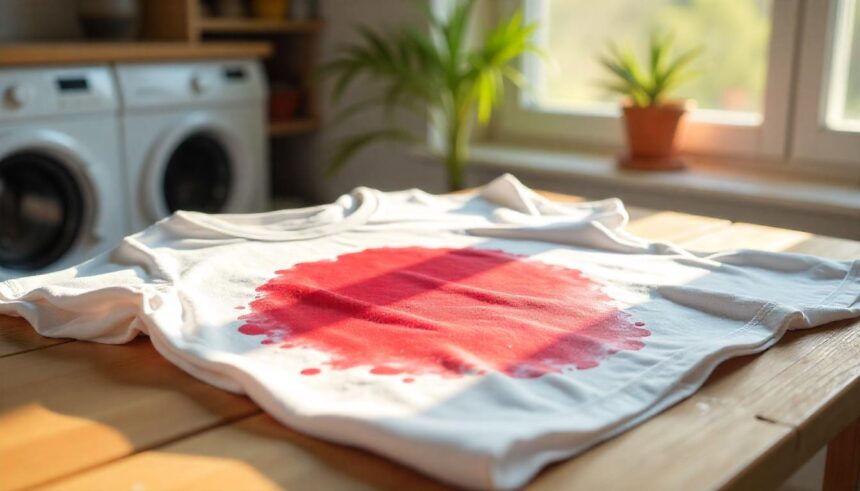Accidental paint spills are every creative soul’s worst nightmare. One moment you’re happily crafting, and the next, a splatter of vibrant acrylic paint lands on your favorite shirt. Panic sets in, but don’t worry; you’re not alone. Many have faced this colorful dilemma! Thankfully, with the right approach and techniques, those pesky stains can be tackled effectively. Whether you’ve just taken a brush to canvas or are knee-deep in an art project gone rogue, knowing how to get acrylic paint out of clothes will save your wardrobe from disaster. Let’s dive into the world of paint removal and rescue your beloved garments!
Understanding Acrylic Paint and its Properties
Acrylic paint is a popular choice among artists for its versatility and vibrant colors. Its water-based nature makes it easy to work with, allowing for smooth application on various surfaces.
One of the key properties of acrylic paint is its fast-drying capability. This means that once applied, it can set in minutes, making quick cleanup essential to avoid permanent stains on clothing.
Additionally, acrylics are known for their durability. When dry, they become water-resistant and can withstand fading from sunlight. This strength is fantastic in art but poses a challenge when trying to remove them from fabrics.
Understanding these characteristics helps you approach stain removal more effectively. Knowing that time is critical allows you to act swiftly before the paint bonds too strongly with the fibers of your clothes.
Immediate Steps to Take when Acrylic Paint Gets on Clothes
Act quickly if acrylic paint accidentally lands on your clothes. Time is of the essence when it comes to minimizing damage.
First, gently blot the stain with a clean paper towel or cloth. Avoid rubbing, as this can push the paint deeper into the fabric fibers.
Next, run cold water over the back of the stained area to flush out as much paint as possible. This helps lift away any excess before it sets in.
If you have dish soap or laundry detergent on hand, apply a small amount directly to the stain after rinsing. Let it sit for about five minutes before rinsing again.
Always check care labels and treat delicate fabrics appropriately. Remember that patience is key; don’t rush through these early steps for optimal results later on!
Removing Wet vs Dry Acrylic Paint
When it comes to acrylic paint stains, the timing is everything. If you catch a spill while it’s still wet, your chances of removal are much higher. Start by gently blotting the stain with a clean cloth or paper towel. Don’t rub; this can drive the paint deeper into the fibers.
For dry acrylic paint, things get trickier. Once it’s set, you’ll need some extra effort to lift it out. Begin by scraping off any excess paint using a dull knife or spoon—be careful not to damage the fabric.
After that, apply warm soapy water directly onto the stained area and let it sit for several minutes. A soft-bristled brush can help agitate the spot without causing further damage to your clothing.
Whether wet or dry, patience is key in treating those pesky stains effectively!
Effective Home Remedies to Get Acrylic Paint Out of Clothes
White vinegar is a powerful ally in your battle against acrylic paint. Mix equal parts of vinegar and water, then gently dab the solution onto the stained area. Let it sit for a few minutes before blotting with a clean cloth.
Another option is rubbing alcohol. Apply it directly to the stain using a cotton ball or cloth. This method works wonders on both fresh and dried paint, breaking down its stubborn properties.
Baking soda can also be helpful. Create a paste by mixing baking soda with water, then rub it into the affected fabric. Allow it to dry completely before brushing off the residue.
Don’t underestimate dish soap either! Combine liquid dish soap with warm water, applying it generously to the stain while gently scrubbing with an old toothbrush for better results.
Using Commercial Stain Removers for Stubborn Stains
When home remedies fall short, commercial stain removers can be your best friend in the battle against stubborn acrylic paint stains. These products are specifically formulated to tackle tough spots that regular soap and water just can’t handle.
Choose a stain remover labeled for use on fabric. Read the instructions carefully before applying it to ensure compatibility with your clothing material.
Apply a small amount directly onto the stained area, then let it sit as directed on the label. This waiting time allows the chemicals to penetrate and break down the paint’s structure.
Afterward, gently blot or rub the area with a clean cloth or sponge. Rinse thoroughly with cold water to remove any residue from both the stain remover and paint particles.
Always test any product on an inconspicuous part of your garment first to check for colorfastness before fully committing.
Tips for Preventing and Preparing for Accidental Paint Spills
To minimize the risk of paint spills, preparation is key. Always work in a designated area that can handle messes. Lay down old newspapers or drop cloths to catch any drips.
Wear clothes you don’t mind ruining, especially when using acrylic paints. An apron can also provide an extra layer of protection for your favorite outfits.
Keep cleaning supplies close at hand. A damp cloth and some paper towels should be within reach so you can act quickly if an accident occurs.
Consider using containers with lids for your paint whenever possible. This simple step not only helps prevent spills but also keeps your workspace organized.
Practice careful handling techniques when mixing or pouring paint. Slow movements reduce the chances of unintentional splatter and give you better control over where the color lands.
Conclusion
Accidents happen. Whether you’re a seasoned artist or just dabbling in crafts, getting acrylic paint on your clothes is an unfortunate possibility. The good news is that with the right approach and techniques, those vibrant stains don’t have to be permanent.
Understanding the properties of acrylic paint can help you act quickly when spills occur. Remember to take immediate action for fresh stains and know how to differentiate between wet and dry paint removal methods. Home remedies often provide effective solutions without needing harsh chemicals, while commercial stain removers can tackle more stubborn marks if necessary.
Preventing future mishaps involves a bit of preparation—like wearing aprons or old clothes during painting sessions. By following these tips and tricks, you’ll keep your wardrobe safe from unexpected splashes of color and enjoy your creative pursuits hassle-free.







